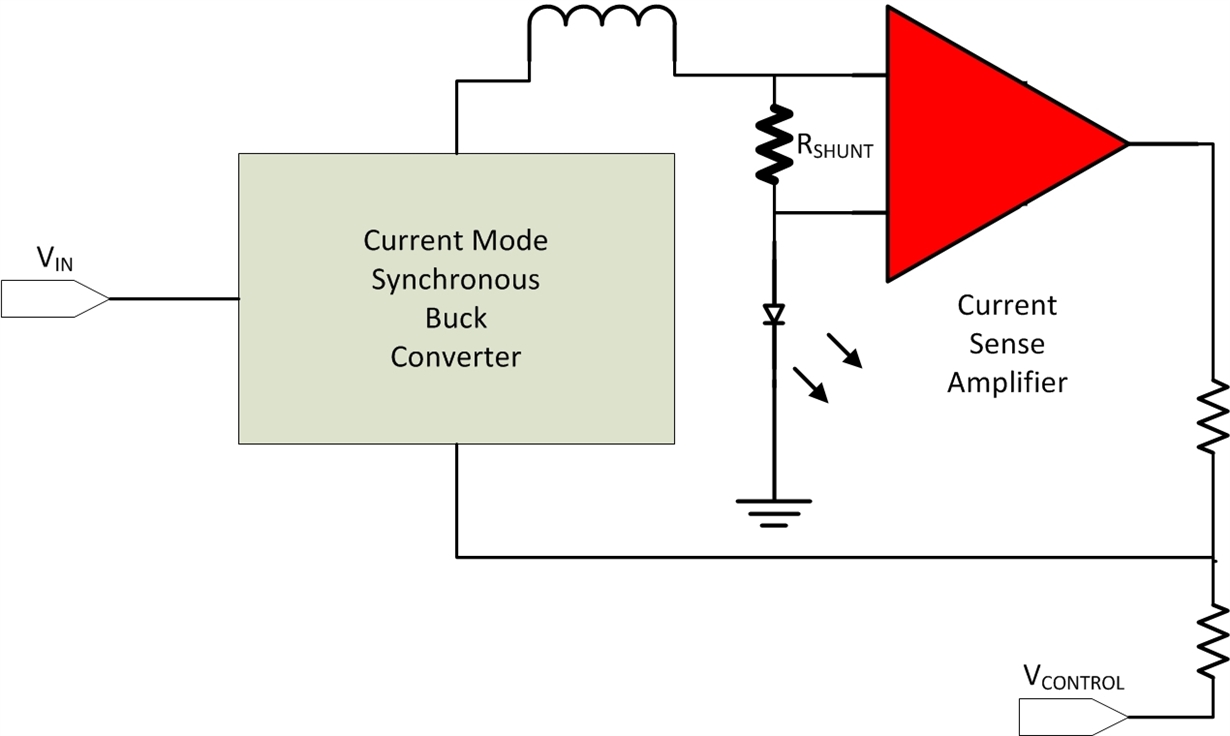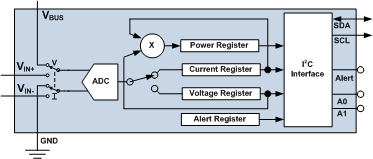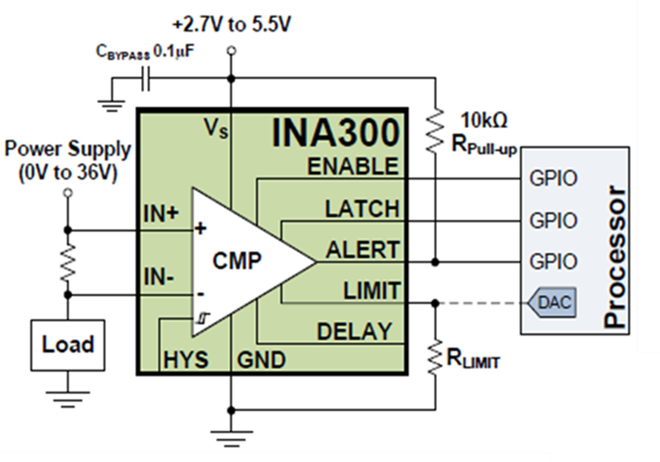SSZTCO9 may 2015 INA210 , INA226 , INA230 , INA282 , INA300 , TPS54218
In part 1 of this series, I discussed the concepts of low-side or high-side monitoring and current flow directionality. In this second installment, I will discuss “how” the current information is used.
What do I mean when I say “how”? A current-sense amplifier measures the current value, and in some cases can also calculate the power. In some cases, the amplifier can compare the current value to a threshold, but it cannot make a decision about what the value means and what the system should do about it.
The output of a current-sense amplifier typically has one of three uses in the signal-conditioning chain, listed below.
- The output can act as feedback to control a specific action of the next portion of the circuit.
- It can go into a system microcontroller (MCU) that will make systemwide decisions based on the current level.
- It can act as an interrupt to notify a controller that a specific threshold has been exceeded, without the controller caring about the actual value.
The first use of a current-sense amplifier output is leveraging the current level as feedback into other portions of the circuit, as shown in Figure 1. In this case, an analog output device such as the INA210 or INA282 will most likely offer the best type of solution. The voltage output feeds into the input pin of the device that needs the feedback. An example of this is regulating a light-emitting diode (LED) with a constant current regulator. The current fed into the LED is measured with a current-sense amplifier, and that output goes into the feedback pin of the regulator, such as the TPS54218, a 2.95-V-to-6-V-input, 2-A synchronous step-down SWIFT™ converter.
 Figure 1 Current-level Output Gives
Feedback to Control an Action in Other Parts of the Circuit
Figure 1 Current-level Output Gives
Feedback to Control an Action in Other Parts of the CircuitThe second and most common use case is to provide the current level information to a controller that will then control other aspects of the system based on the level, as shown in Figure 2. For example, the current system’s current level may be used to adjust fan speed to match the required cooling to the heat being created. The current level can also adjust the clock speed, at which a high-performance integrated circuit (IC) is operating to balance the performance versus the heat.
While the analog output devices referenced above may offer all of the performance needed for this use case, there needs to be an analog-to-digital converter (ADC) for the controller to use the data. Many MCUs offer integrated ADCs that can do this job. However, using a digital-output device such as the INA226 or INA230 may allow the use of a lower cost MCU or free up the integrated ADC to perform other functions. In addition, many of these newer digital-output devices offer an alert functionality that can allow the MCU to ignore the current measurement system until a certain threshold is reached. Once the alert triggers the MCU, it then starts monitoring the current to determine the next steps.
 Figure 2 Current Level Feeds into an
MCU, Which Controls Other Aspects of the System
Figure 2 Current Level Feeds into an
MCU, Which Controls Other Aspects of the SystemThis brings us to the third common use case: simple alerts that trigger when an overcurrent threshold is exceeded, as shown in Figure 3. (Think eFUSE technology.) A device like the INA300 is a simple-to-implement, small-footprint, low-cost, overcurrent comparator that supports this type of alert-only use case.
 Figure 3 Current Level Serves as an
Interrupt, Notifying a Controller That a Specific Threshold Has Been
Exceeded
Figure 3 Current Level Serves as an
Interrupt, Notifying a Controller That a Specific Threshold Has Been
ExceededI hope you now understand the three main ways that current information is used in current-sense amplifiers. In the next installment, I’ll discuss how the current range affects device-selection criteria and basics on calculating the value of the shunt resistor needed.
Additional Resources
- Learn more about TI’s broad current-sense amplifier portfolio.
- Watch this video about how the INA300 is optimizing overcurrent detection.
- Check out these related TI Designs reference designs: